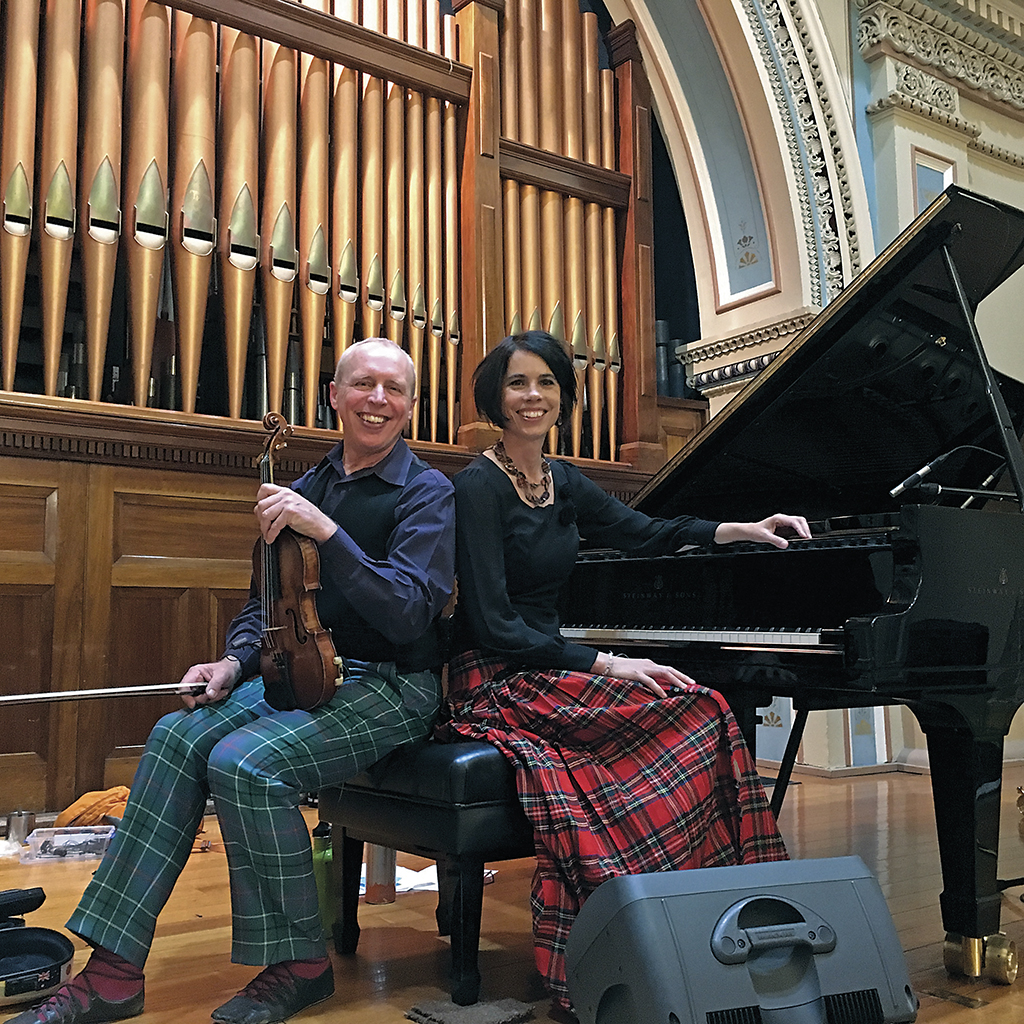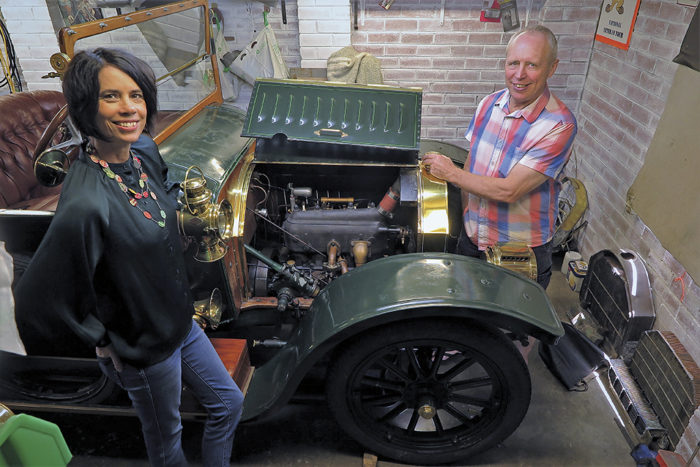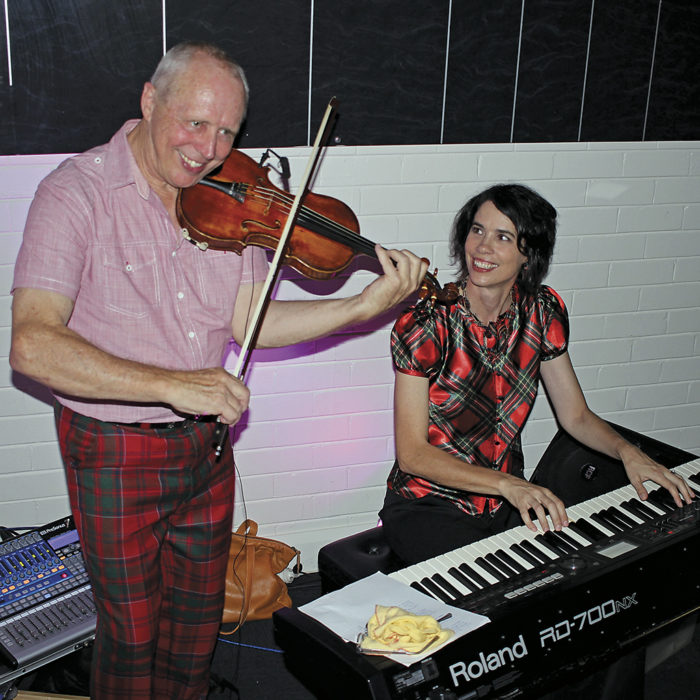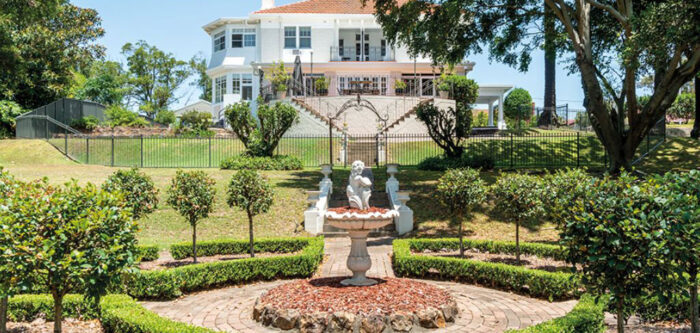
Duncan & Strutt
Weddings, ceilidhs, almost anything…
Captain James Cook was the son of a Scottish ploughman. Governor Lachlan Macquarie was born on the Hebridean island of Ulva. Governor John Hunter, after whom the Hunter River and Valley are named, was born in Edinburgh. The Hunter towns of Largs, Lorn, Aberdeen, Cessnock and Lochinvar are all named after locations in Scotland. Australia’s early settlers came with the melodies of jigs and reels singing in their heads, and very likely some dance steps to go with them. Traditional Scottish dance music is still alive and well around the country.
Chris Duncan and Catherine Strutt are thoroughly Australian, indeed thoroughly Novocastrian. Chris has made a career as a very capable mechanic, and channels some of that expertise into a passion for veteran cars. He also plays the fiddle. Catherine has a Bachelor of Visual Arts from the University of Newcastle, and, working in harness with her twin sister Jennifer as The Strutt Sisters has earned a living of sorts through jewellery manufacture and visual art-making. Add to that her remarkable affinity for the piano. Each, from a very early age, has been exposed to, indeed immersed in, traditional Scottish dance music. It hasn’t made them rich or especially famous, but it has allowed them to become aware that as musicians they are right up there amongst the best in the world. How privileged we are to have them in our midst.


If you have lived in the Hunter for 30 years you’ll likely have come across Duncan & Strutt’s foot-tapping music somewhere, by intent or by accident. They have been performing together for that long. I’ve seen them in action at the National Folk Festival in Canberra on a few occasions, to the point of just expecting they will be there. Add to that other folk festivals at Woodford, Port Fairy, Cygnet or Portarlington.
They were at the Aberdeen Highland Games for the event’s 20th year as the driving force for more than 150 dancers at the Saturday night ceilidh (that’s a social event with Scottish or Irish folk music and traditional dancing). Or perhaps you’ve been to a wedding, where after the speeches the night leaps to its feet with Chris and Catherine – and a ‘caller’ to help teach the steps – to deliver melody and rhythm for some fun and energetic Scottish dancing.
Global links
I arrive on a rainy morning at an address in Adamstown Heights: I am about to interview a suburban husband and wife who just happen to be fabulous musicians. I am welcomed into a small front room dominated by a grand piano and wonder how it could possibly have been brought in there.
I soon learn that there’s a great deal happening within this humble dwelling, and only some of it connects to the rigorous demands of the Royal Scottish Country Dance Society.
I’ve looked up the Duncans on the map of Scottish clans and they are centred on the east coast just north of Dundee. Between Dundee and Edinburgh is St Andrews, the home of the Royal Scottish Country Dance Society, custodian and upholder of traditional practice in Scottish music and dance.


The Society has branches and affiliates all around the world, including Sydney. It is through links with this Society that Chris and Catherine have been invited to perform their authentic music at events in Canada, Japan, New Zealand and California.
Chris Duncan was born into Scottish culture, but in a Charlestown sort of way. He was introduced to Scottish traditional dance as a child and first danced in public at the Mattara Festival in 1972. Soon he was learning the violin, and by sixteen he had formed with two friends a Scottish dance band, Harp & Claymore, that went on to set local halls bouncing for nearly 20 years.
Catherine and her sister were a decade or so behind, but on the same path. Same traditional Scottish dance teacher. Same growing familiarity with the rhythms, the tempos, the melodies. Catherine’s parents formed a bush-dance band called Coalbrook Ceilidh, soon to be joined by their daughters.
The band performed in country halls up and down the valley, at the Warners Bay Bush Barn, and for bush dances in Glebe, Sydney. Catherine learned to play the piano and had a rare gift to visualise the music as she played, to see it as colours as she sensed her way across the keys. In her early years as a Scottish dancer, often enough Chris was a fiddler in the band that provided the music.
From Cardiff High School to the Visual Arts faculty at Newcastle University, with Scottish music and dance threaded through all the way, Catherine was striking out. Warners Bay High School and an apprenticeship well behind him, Chris was into the responsibilities of life, running his own successful automotive repair business, tinkering with old cars, and playing alongside the very best fiddlers of the time. He was devotedly exploring the repertoire of composers and players of the Golden Age of Scottish fiddle music – from the late seventeenth to the early nineteenth century. By 1990 Chris and Catherine had become a musical duo.
Read more about Duncan and Strutt in the Winter issue of Hunter & Coastal Lifestyle Magazine or subscribe here.
Story and photography by Ken Rubelli

